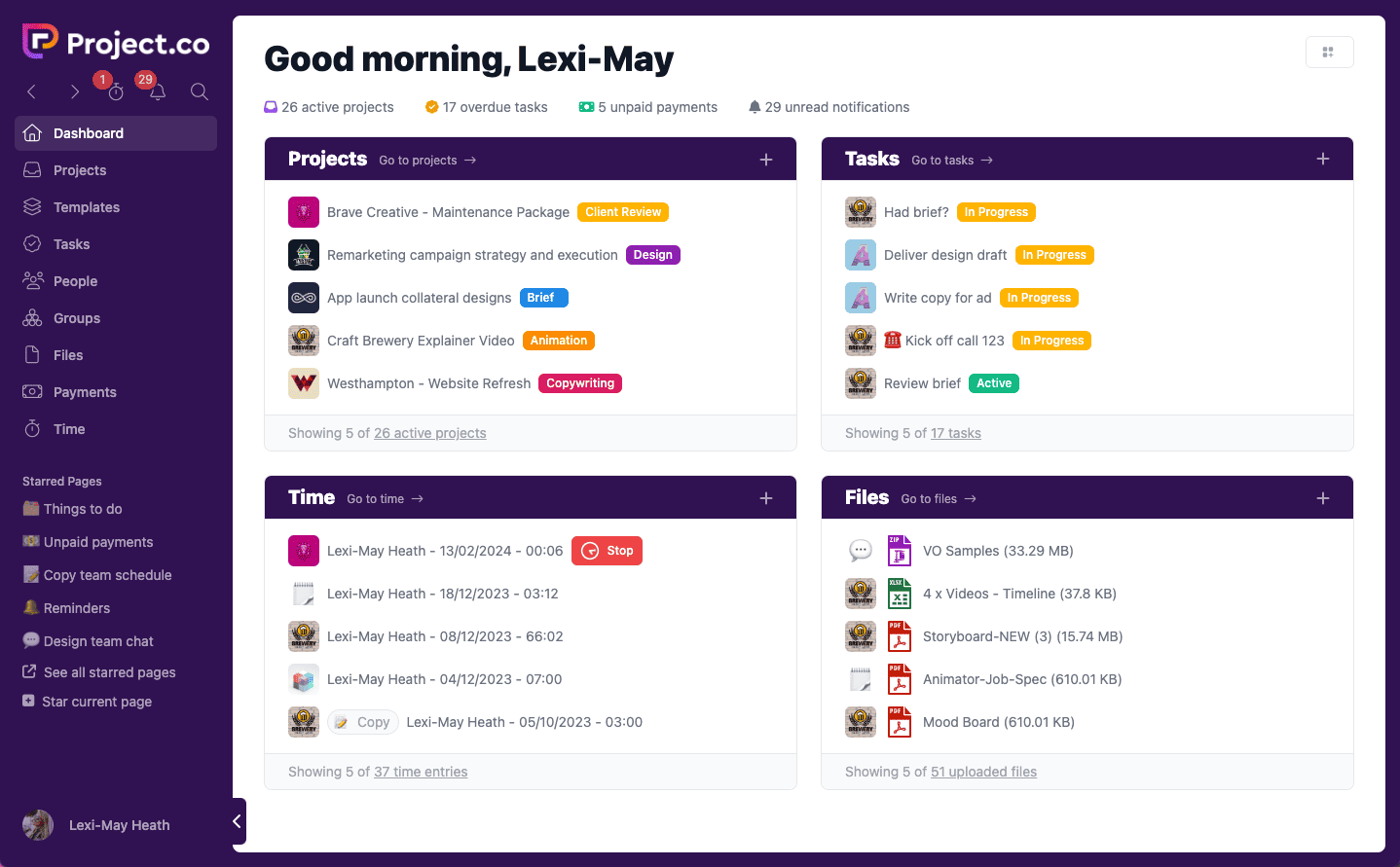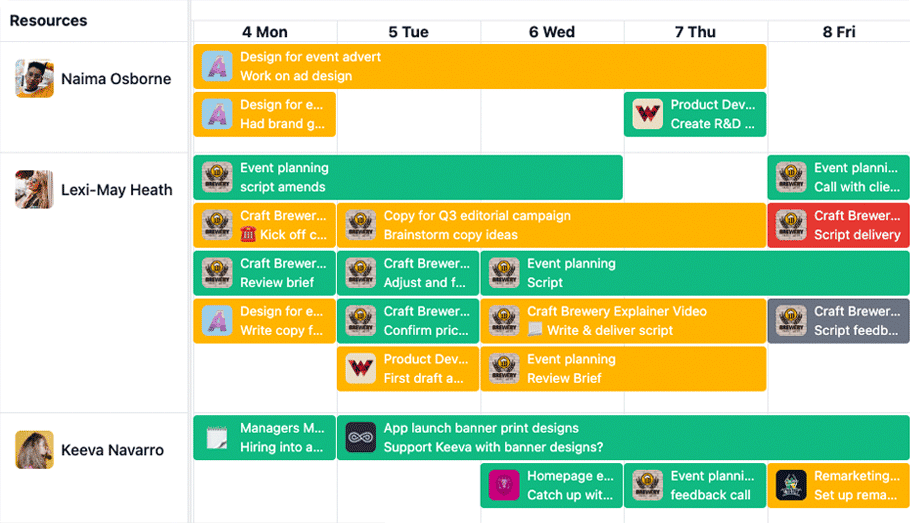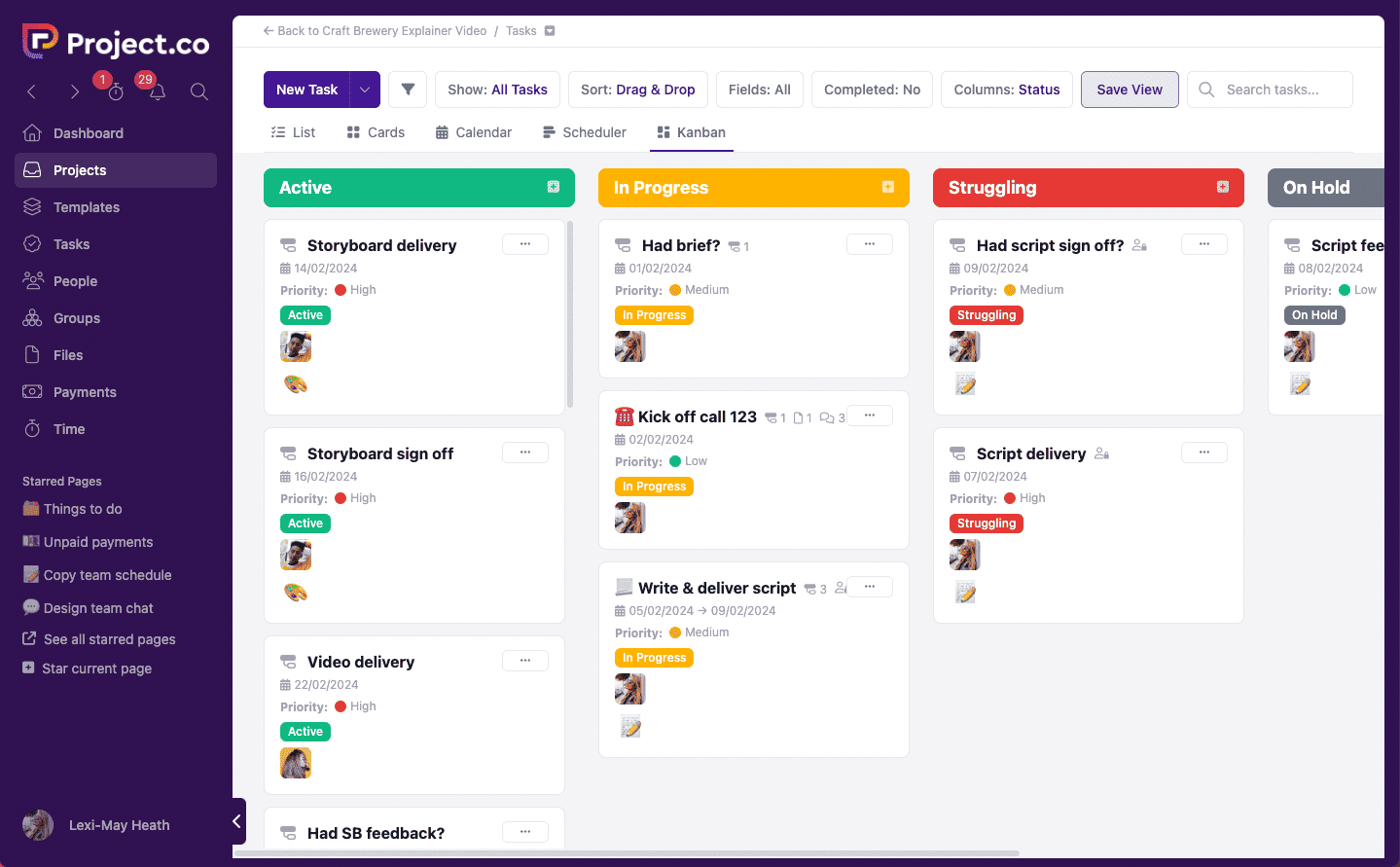Mike Tyson once famously said ‘Everyone has a plan until they get punched in the face.’
And there’s a lot of truth to that – not just in boxing, but also in project management, and, indeed, in life.
To put it simply, a project baseline is the plan you have for your project…until that plan gets punched in the face!
In this blog, we’ll explain what project baselines are, the benefits they can bring, and how you can baseline projects step by step.
What is a project baseline?
A baseline in project management is a robust, well-defined starting point that expresses the what, when, who and how of your project.
And that makes it a crucial part of the planning stage for any project: it’s essentially a benchmark that illustrates the ‘perfect’ least complicated, neatest-and-tidiest path to success.
When you have a project baseline, it becomes a measuring stick against which a project’s progress can be measured as it unfolds.
On track with the project baseline? Great!
Lagging behind? You need to throw more resources at it or change tact.
Ahead of the baseline? You have the freedom to actually pull back resources and put them where they might be needed elsewhere.
What’s included in a project baseline?
A project baseline plan includes a number of key components:
Project scope baseline
When it comes to projects, scope is everything! It’s like a map that shows you where you’re going and how you’ll get there. In other words, it’s the project boundaries – the what, why and how of the project, including all its components and deliverables. Think of it as the project’s mission statement! It’s vital to define the scope so that everyone involved knows just what they need to do and when. Otherwise, things could go seriously awry! A project scope baseline sets project expectations, giving a solid idea of what is – and sometimes what isn’t – to be delivered or achieved.
Project schedule baseline
If the project scope is the ‘what’ then the project schedule is the ‘when.’ A good project schedule lays out realistic dates and times for when every deliverable, task and milestone needs to be completed in order for a successful outcome. The schedule baseline lays out the ideal scenario for getting a project complete within the available time.
Project cost baseline
Of course, another key component of any baseline project plan is the cost: making sure things are done within budget and costs don’t spiral out of control. That’s why this is also defined in any good project management baseline plan. A project cost baseline again lays out a realistic, best case financial scenario for getting the project completed.
Why is having a project baseline so important in project management?
As we’ve already hinted at, creating a project baseline gives project managers a way to effectively track project progress.
This helps a project team to identify any problems or delays quickly, allowing them to take corrective action if necessary.
Having a project baseline also ensures that project goals are met in the most efficient and cost-effective way possible. Efficiency and cost are at the heart of creating performance measurement baselines and, with a clearly defined performance measurement baseline to aim for, the chances of success are dramatically improved.
How do project managers baseline a project?
OK, so how do you baseline a project? Here’s a step-by-step guide to project baselining:
Step 1: Gather project information in one place
At the beginning of any project, you’ll often have a lot of different information living in a lot of different places.
You and your team might have used different software tools to create proposals, plans and forecasts already, and other important information may be scattered around people’s desktops and file systems.
We (obviously!) recommend using a project management tool such as Project.co to get everything in one place.

Using Project.co, you can create a project in a matter of seconds, and quickly add the tools you need to manage the project. You can embed any files that define things already agreed, so that they’re easily accessible throughout the lifecycle of your project.
Step 2: Identify and involve all stakeholders
A project baseline is useless if it isn’t agreed to by your whole team. So getting everyone on-board is really important – buy-in will massively help you along the way, as people will be able to understand what’s needed and when.
But more than just involving everyone in signing off and agreeing to your project baseline – visibility is also a huge deal. Get them to use one tool with one central source of truth where everybody can check in on where things are up to, and you’ll find it’s much easier for your team to see the big picture in all that they do.
You can invite all your people to your project on Project.co – with different permission types for team members, clients and freelancers.

Step 3: Establish project baseline metrics and KPIs
Obviously, as a project manager, the whole point of creating a project baseline is to get solid forecasts in place for the scope, schedule and costs of your entire project. What we’re really defining here is project success criteria.
As a starting point, it can be helpful to sit down with 3 blank pages, and at the top of each one write either ‘Scope,’ ‘Schedule’ or ‘Cost.’
Across these pages you should scribble down all the tasks, milestones, deliverables, time constraints and project costs. Then it’s about working out how these things interplay with each other and creating a unified plan that define ALL these things.
Step 4: Create a project plan outline
And this is the plan that brings everything together. This is essentially a document that defines:
– What are the goals of the project?
– What does success look like?
– Who’s going to be working on the project?
– What are ALL the tasks that will be completed?
– When are all tasks, deliverables and milestones due?
– What’s the budget for the project?
Be over-conservative here where possible: forecast more time, and higher costs, than you actually need. This will build some redundancy into your plan and give you a fallback option when there are (inevitably) hiccups along the way.
Step 5: Monitor the project
The baseline is an activity that lives at the beginning of a project, but remember: it’s utterly pointless to even bother creating one if it doesn’t play a part in the rest of your project.
Ongoing monitoring means stacking up your ‘plan’ against what’s ‘actually’ happening. In other words, regularly tracking project performance against the project baseline metrics to ensure that project goals are being met and any potential issues are identified quickly. This gives you the flexibility to allocate extra people, resources and funds as required.
Project baseline example: The explainer video
Now you know the basics of project baselining, let’s look at a simple example to see how this methodology works in practice.
We’ll use an example that’s near and dear to our hearts – creating an explainer video.
Project scope
We’ve been hired by a client to produce and deliver a 60 second animated video.
This needs to be consistent with the style and complexity of 3 separate videos they’ve provided to us. (This helps nail down exactly what style we’re working towards so we know it can be delivered and achieved, and we’re not working in different directions.)
By nailing down the length and style of the video, we know exactly the ‘scope’ of the project and what it is we need to create.
Project schedule
Now, we need to work out how long it will take to deliver on that scope.
We know from discussing with the client, we have 8 weeks – they want to showcase the video as part of their new product launch.
Assuming we work weekdays only, this gives us 40 working days. In the spirit of being pragmatic and proactive, we’ll create a schedule that actually works in 6 weeks – 30 working days – giving us plenty of buffer time.
A schedule baseline is about breaking this down into the individual tasks that are required. We need to write a script, create the graphics, record a voiceover, buy some great music and animate the video. We’ll need sign offs on each of these stages and it wouldn’t be efficient to start work on one phase, without the previous one being signed off and agreed upon, meaning they’ll have to follow on from each other.
So we might break this down as follows:
– Storyboard – 8 working days for the first draft. 4 working days for feedback, revisions and changes.
– Animation/Voiceover/Music – 8 working days for the first draft. 4 working days for feedback, revisions and changes.
This is 30 working days total. If things start to slip as the project proceeds, we can look to allocate more time or more resources as necessary.
Project costs
The main costs involved in this type of project would be personnel costs. Each ‘hour’ of their work would have a particular value, and based on the amount of hours/days we assign them to working on the project, we’ll have a rough idea of how much it’s likely to cost to deliver the work. We can then add on other costs such as software licenses, office running costs, audio files, and get the total picture.
Based on what we’re charging the client, we’ll then have a clear idea of the profit margin we’re likely to achieve on the project. It’s important to leave headroom here as, if there’s slippage in the schedule and we need to allocate extra resource, this will likely come with a cost.
Monitoring
And now it’s time to actually begin the work. As the project unfolds, we keep one eye on the deliverables
Using Project.co we can keep an eye on our progress by creating tasks for each milestone and deliverable, assigning them to people and dates, and then using task views like the Scheduler and Kanban views to understand where things are up to, and where extra support and input may be required.


Can project baselines be changed?
Yes! Although we spend time creating a project baseline, it’s quite likely that it will change throughout the process. Remember what Mike Tyson said!
Particularly for longer-term projects, it’s important to revisit the baseline plan and adjust it to respond to issues that arise along the way.
Thanks for reading
Project baselines are an essential part of project management, helping project teams to effectively track project performance and ensure project goals are met.
The steps outlined above provide a guide to project baselining, while the examples provided give an idea of what project baselines might look like in practice.
Remember, project baselines can be changed if needed – in fact, they almost always will be. Just keep your project goals front and centre of mind, and remember that by shooting for the moon, you give yourself the best possible chance of catching the moon!
Since you’re here, why not check out Project.co? We built our tool from scratch to give people like you the best possible chance of achieving your project management goals. It’s free to get started!


